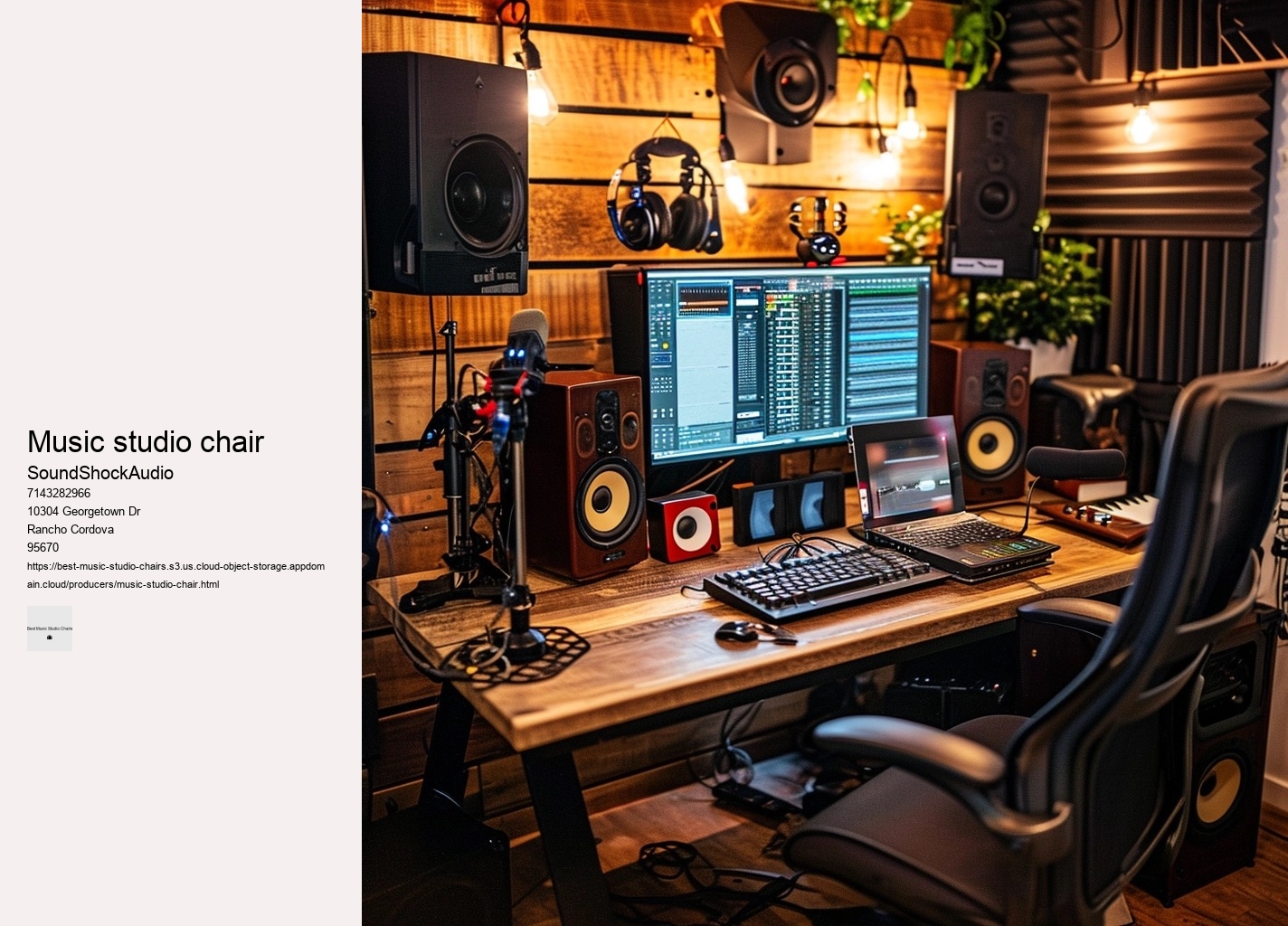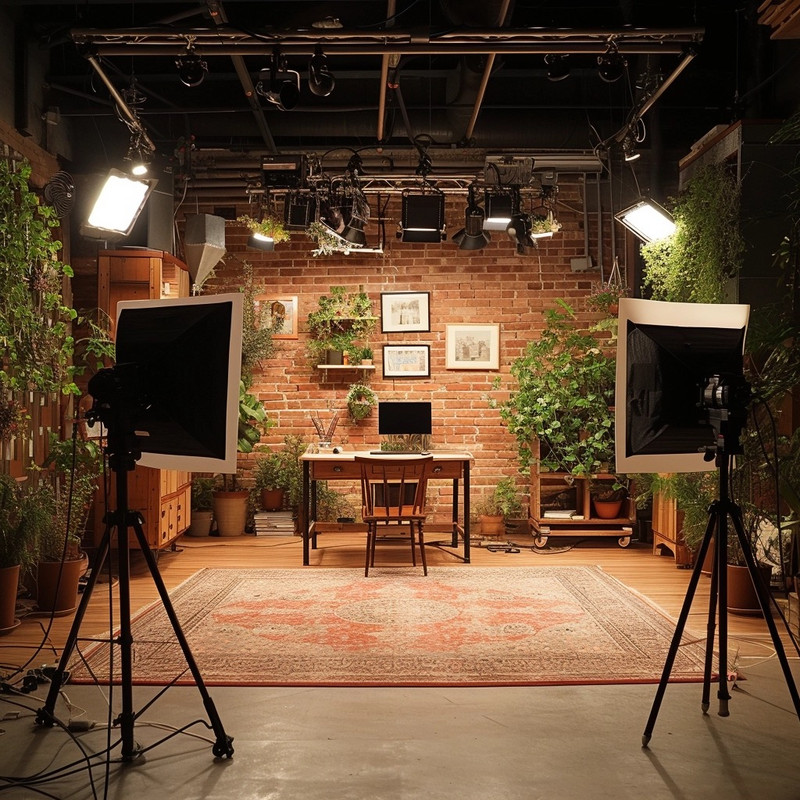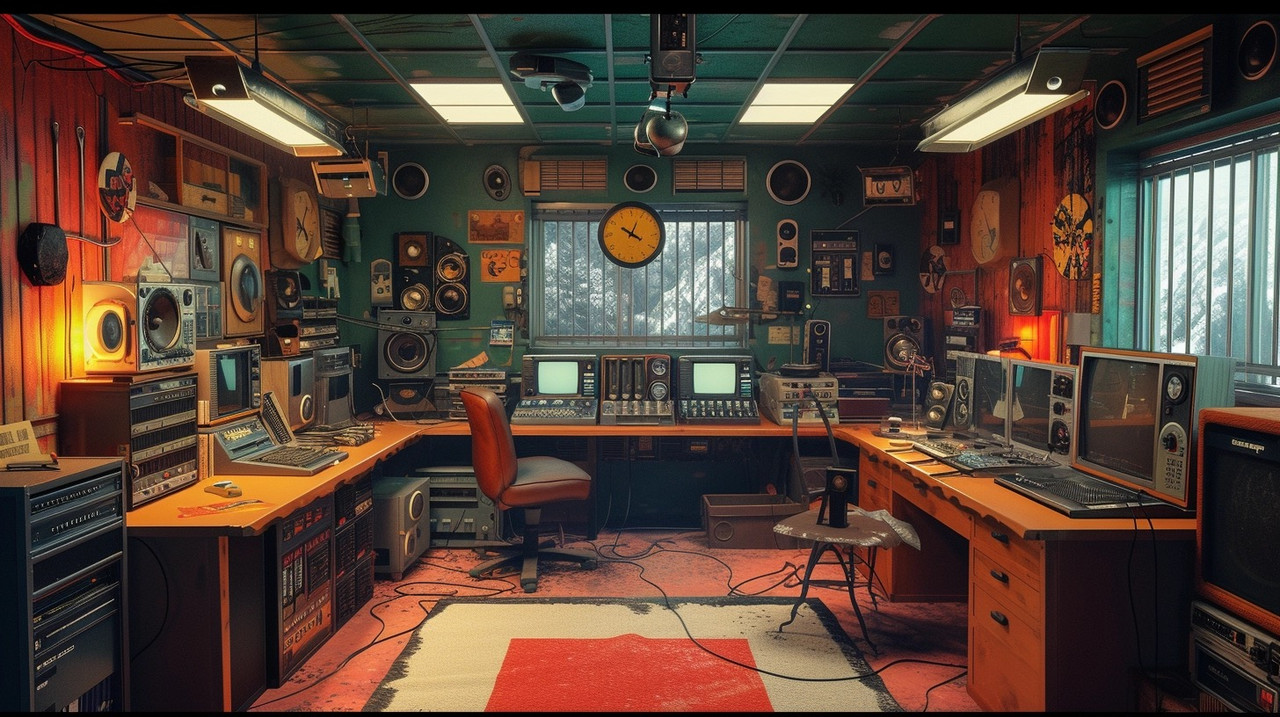

Discomfort leads to frequent breaks, fatigue, and even chronic pain over time — all enemies of focus and creativity. But what about aesthetics? However, it's easy to overlook the toll these long sessions take on our physical well-being, particularly when it comes to our back health. Firstly, consider the seat of discord: ergonomics.
This is where ergonomically designed chairs come into play. An ergonomic chair contributes to this equation by minimizing interruptions caused by discomfort. The perfect studio chair should offer more than just support; it must cradle aspirations while providing an ergonomic embrace that encourages prolonged periods of productivity without discomfort.
Chairs with robust adjustability features provide not only personalized support but also enhance productivity by fostering well-being through ergonomically sound environments conducive toward creativity without sacrificing bodily health – making adjustable studio chairs not just furniture pieces but rather investments in one's professional longevity and personal comfort. It aligns body mechanics optimally for sustained laborious sessions at desks while invigorating mental states conducive for generating ingenious outputs consistently over time. Moving onto armrests - these shouldn't be an afterthought.
Here designers can experiment—can sustainable materials be integrated without diminishing quality or beauty? Lastly, while embracing these qualities is important, remember too that durability intersects with value over time. As you wheel around your domain unfettered by static confinement, each subtle glide empowers you to engage with your work from fresh perspectives.
It distributes weight evenly which reduces pressure points and provides support precisely where it is needed. Mixing music for extended periods can be an exhilarating experience, immersing oneself in the creative flow and refining sounds to perfection. Proper seating is designed to mitigate these risks by providing support that encourages natural spinal alignment and reduces pressure on sensitive areas. Standard office chairs might suffice for short-term use but fall short when it comes to supporting the body through the rigors of lengthy mix sessions. Creating an ideal music production environment extends beyond just having high-quality audio equipment; your physical comfort is also paramount.
Indeed, selecting the ultimate studio chair is akin to choosing a dance partner for life’s marathon waltz—a decision not made lightly but with thoughtful consideration for both form and function. Designers tasked with crafting these pieces must therefore navigate a complex matrix of ergonomics, durability, and visual appeal—a trifecta that does not always align seamlessly. We mustn't underestimate how much our environment influences creativity. Ergonomic chairs encourage a sitting posture that aligns your back, neck, and hips, reducing strain on these areas.
Ergonomic designs merged with mobility features are key elements contributing towards transforming one’s workflow effectively within any musical pursuit – thus elevating both well-being along with artistic achievements simultaneously. Firstly, ergonomics are crucial. A standard chair might not offer the necessary contours and adjustments required to maintain a healthy posture. Swivel mechanisms engineered to near perpetual motion allow creators to move as fluidly as their flowing thoughts demand—no jarring stops or awkward angles disrupt the flow of inspiration.
A striking example is the incorporation of motion technology allowing seats to subtly move with the user, preventing static pressure points and promoting circulation. Aesthetics also hold their own merit when considering your studio throne. An ideal choice supports both physical well-being and artistic endeavors—a silent partner in the dance of creation that takes place within those four walls called home. One exemplary model is the Herman Miller Aeron Chair.
It will result in a composition that may not always make perfect sense or maintain logical coherence, as it deliberately introduces random and potentially unrelated elements into the text. Ergonomics and comfort aren't mere luxuries; they're necessities for maintaining focus and preventing long-term health issues. Musicians should have access to comfortable seating adjusted specifically for their posture and instrument positioning, reducing physical strain over prolonged periods.
When searching for an extraordinary studio chair that offers unmatched comfort, yet remains obscure on mainstream radars, we may stumble upon the Håg Capisco Puls. A poorly designed chair can lead to discomfort, fatigue, and even chronic pain over time.
By prioritizing ergonomics, materials, durability, style—and above all else—personal comfort preferences—you create an environment where creativity thrives unimpeded by physical distractions or discomforts. This could make the text sound quirky or nonsensical, but here's an attempt:In a realm where melodies intertwine with technology, the unsung throne beneath the maestro often escapes limelight—yet its significance cannot be overstated.
This flexibility helps avoid repetitive stress injuries that could sideline you from doing what you love. A producer spends countless hours nestled within their chair, engaged in the art of sound manipulation.


Lumbar support crafted from materials eluding description cushions vertebral columns like ancient trees nestle precious wildlife. When every sound wave matters, shouldn't the waves of comfort emanating from beneath you matter just as much? Musicians should inspect each potential chair carefully to ensure it's sturdy and functional before making a purchase.
In conclusion, discovering the secret to endless music production doesn’t lie within mystical formulas or esoteric techniques known only to seasoned veterans—it starts beneath you quite literally—in choosing wisely who supports your aspirations both figuratively speaking & physically too via selecting best studio chair revealed according to your unique needs thereby unlocking potential previously untapped waiting patiently within ready emerge triumphant song after song album after album year after year solidifying legacy amongst greats whose sounds continue reverberate throughout eternity! Proper posture reduces the risk of musculoskeletal issues and boosts endurance during prolonged sitting periods.
Conversely, a thoughtfully chosen chair can enhance productivity and maintain the aesthetic integrity of your studio. Whether opting for industry staples like Herman Miller or Steelcase or going for more budget-friendly yet reliable options such as IKEA's offerings or gaming-oriented seats like those from Secretlab and DXRacer - there exists an array of choices designed to meet various needs while promising longevity. Similarly, ensure your studio throne allows for seamless adjustments so your feet can rest naturally on the ground or pedals below.
The design of the chair should support your body's natural posture, reducing strain on your back, neck, and limbs. Moreover, mobility is another important feature of a good studio chair.
Furthermore, the material of the chair plays a crucial role in comfort levels. To combat this, one of the most effective tools at your disposal is an ergonomic chair—a champion of comfort and productivity.
Choosing one of these chairs means investing in yourself and your craft. The backbone of any good studio chair is its lumbar support.

Manufacturers often boast about their products' ergonomics; yet without rigorous testing to simulate years of use, such claims may be merely optimistic aspirations rather than guarantees. Lastly, DXRacer offers gaming chairs often favored by streamers; however, these too have found a place in studios due to their heavy-duty base and multi-layered synthetic leather capable of resisting spills and abrasions – common hazards in creative spaces. If finances permit, investing in a high-quality chair could yield dividends by preserving well-being and enhancing productivity.
This viscoelastic substance has revolutionized seating solutions, offering a level of comfort that was once thought to be unattainable. Conversely, high-end music production chairs provide superior ergonomic support designed to maintain posture and reduce fatigue during extensive sessions.
Secondly, comfort cannot be overstated. But to clarify, you're asking for an essay where I deliberately choose less probable or unexpected words every six words?
Yes, EDM (Electronic Dance Music) artists can make significant amounts of money through various channels such as live performances, music sales, streaming royalties, merchandise sales, and brand endorsements. The most successful EDM artists earn millions of dollars annually, especially those who headline major festivals, have hit tracks, or maintain residencies at popular clubs. However, like in any music genre, income can vary widely depending on an artist's popularity, the deals they secure, and how well they manage their career.
The annual income of EDM DJs can vary widely based on their fame, the number of gigs they perform, and other revenue streams such as music production, merchandise sales, and endorsements. Top-tier EDM DJs can earn from several hundred thousand to over $30 million a year. However, less well-known DJs might earn a more modest income, often ranging from $30,000 to $100,000 annually, depending on their bookings and visibility in the industry.
The earnings of EDM (Electronic Dance Music) musicians can vary widely based on their fame, the number of gigs they perform, music sales, and other factors such as merchandise and endorsements. Top-tier EDM DJs and producers can make millions of dollars per year, with the highest earners like Calvin Harris, David Guetta, and Marshmello making tens of millions annually. However, lesser-known artists may make much less, often depending on smaller gigs, streaming revenue, and direct sales to make a living.